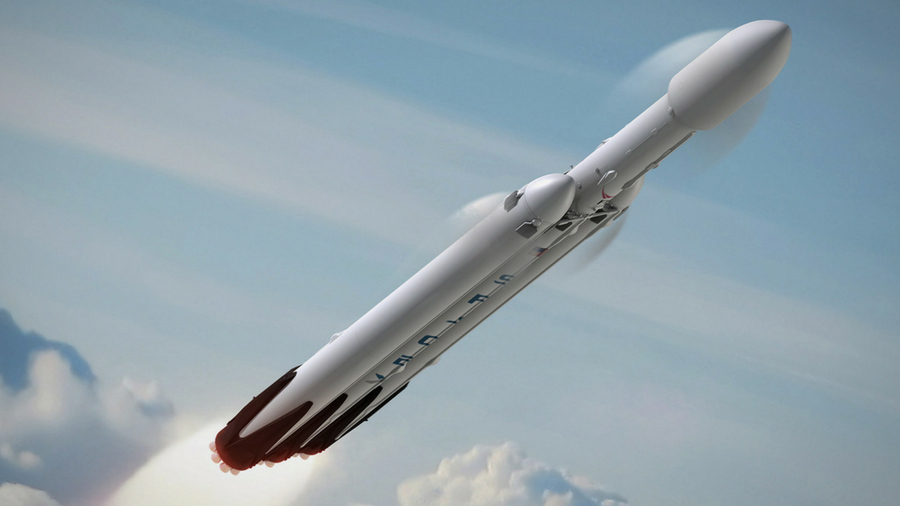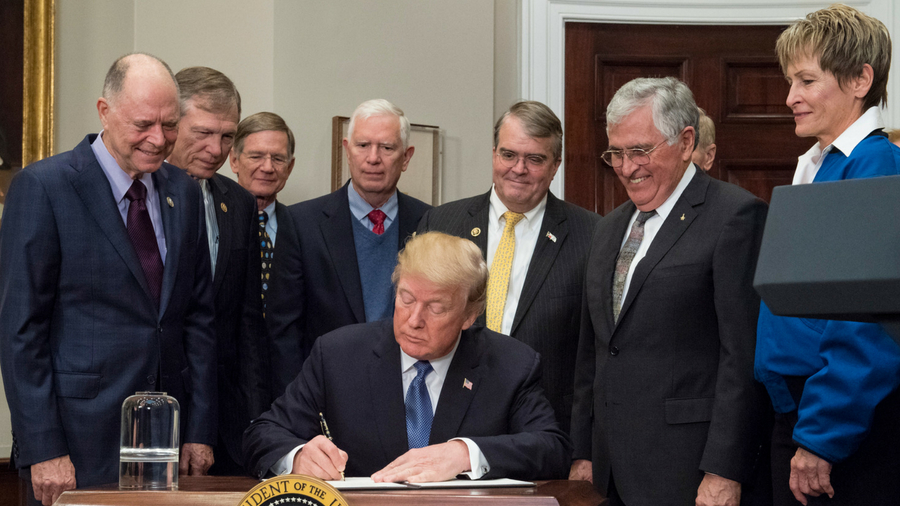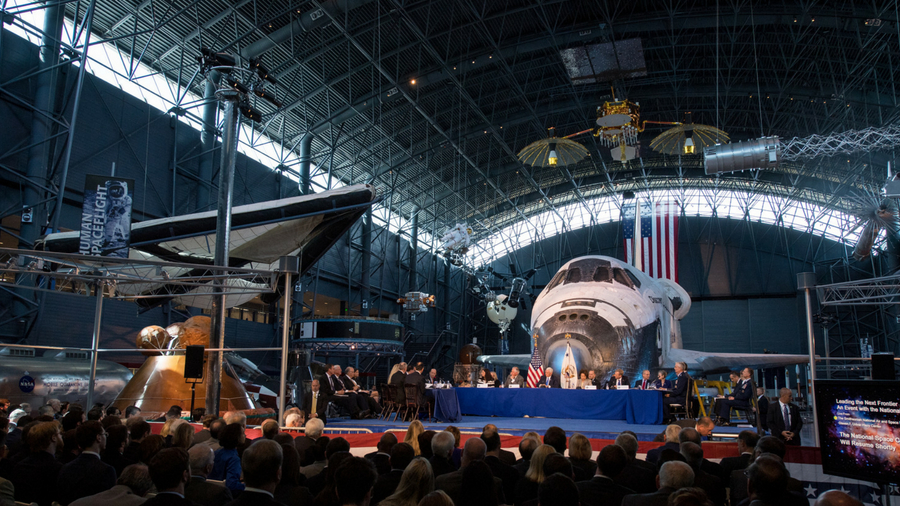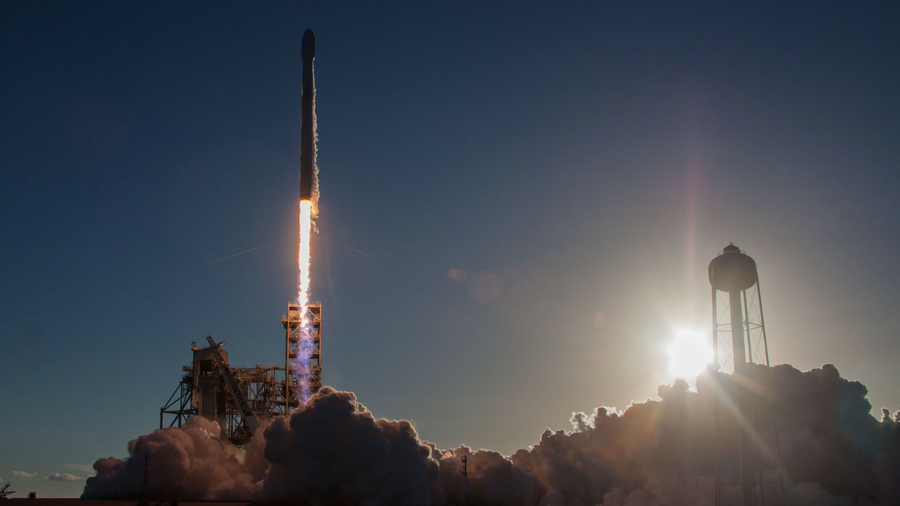What NASA did next: from ‘Space Force’ to the Moon and Mars
Space races were so much simpler in the 1950s

Main image: Elon Musk's SpaceX rockets could one day take US astronauts into space. Credit: SpaceX
It was summer, a Cold War with Russia was brewing, and a Republican president in the United States was getting worried about foreign powers winning the 'space race'. Sounds familiar? You may not think that much has changed in the 60 years since President Eisenhower established NASA on July 29 1958, just months after Sputnik-1 became the first human-made object in space.
However, President Trump's recent promise to create a 'space force' as the sixth branch of the United States Armed Forces comes at a time when NASA is already having to rethink its space exploration priorities.
- Do you have a brilliant idea for the next great tech innovation? Enter our Tech Innovation for the Future competition and you could win up to £10,000!
Does Trump care about space?
“Right now, we have bigger problems … we’ve got to fix our potholes,” said Trump during the presidential campaign in 2016. However, he also promised to “free NASA from the restriction of serving primarily as a logistics agency for low-Earth orbit activity,” which suggests he wants NASA to leave the International Space Station to companies like SpaceX, Orbital ATK and Boeing, and focus on the Moon and Mars.

There are others who think he has no clue about space exploration. In April 2017, during a phone call with a US astronaut on the ISS, Trump declared that NASA should get humans to Mars during his first term. NASA thinks 10-15 years is more realistic.
"Trump doesn't have space as his highest priority, but no US president has ever set space as their highest priority, not even John F. Kennedy," says Laura Forczyk, space consultant at Astralytical. "He doesn’t seem to care about space, but he does pay attention to his Vice President Mike Pence, who is chairman of the National Space Council (NSpC).”
How NASA works, 1: the president sets policy
President Trump first re-launched the NSpC, then in December 2017 signed Space Policy Directive 1, instructing NASA to return Americans to the surface of the Moon, and eventually put astronauts on the surface of Mars. "The directive I am signing today will refocus America's space program on human exploration and discovery," he said.
Sign up for breaking news, reviews, opinion, top tech deals, and more.
However, the Trump administration then tried to force NASA to dump the Wide Field Infrared Survey Telescope, its planned space observatory that would follow the James Webb Space Telescope, itself the successor to Hubble. Fortunately for astronomers, Space Policy Directives don't actually mean much.

How NASA works, 2: Congress gives it the cash
NASA's budget is not set by the US President, but by Congress. "Congress can choose to listen to the president's Space Policy Directives, or choose to ignore them," explains Forczyk. "Congress is the one that provides NASA's budget – one committee to appropriate it and one committee to approve it."
Not surprisingly, senators from Florida and Texas, and other places where NASA centers are located, tend to be very supportive of big NASA projects. So for now, WFIRST remains because Congress gave NASA the money it needed. However, now comes another space policy announcement from the White House that appears to be nothing to do with space exploration.
What is a 'Space Force' and why is it needed?
The Space Force is a planned offshoot of the US Air Force, and its creation is less to do with China’s plans to launch a China Space Station (CSS) in the 2020s and to colonize the Moon after 2030, and more to do with China's anti-satellite and cyber security activities.
"We don’t want China and Russia and other countries leading us," said Trump in June of this year during a National Space Council meeting. “When it comes to defending America, it is not enough to merely have an American presence in space. We must have American dominance in space."
A separate organization within the Department of Defense, the Space Force will be concerned with 'national security space activities', which probably means satellites and rocket launches, rather than space lasers and putting armies on other planets, as its sci-fi name suggests.
NASA's origins are military
Satellites and rockets is pretty much what the terrestrial US Air Force Space Command already deals with, which prompted retired NASA astronaut Mark Kelly to call it a “dumb idea”. However, NASA does have its origins in geopolitics and the military; it was created in the wake of the ‘Sputnik crisis’.

Still, if the Space Force is really going to obliterate asteroids and gun-down aliens, there's one small problem: the US doesn't currently have the capability to send astronauts into space from US soil. Bizarrely, that's Russia's job, and despite the ongoing Trump-Russia controversy, the situation isn't going to change any time soon.
You would think that any country aspiring to have a Space Force would be able to launch astronauts to space, but that's not the case for the US at present. Since July 2011 and the retirement of Space Shuttle Atlantis, every US astronaut sent to the International Space Station has been taken there by the Russian space agency Roscosmos on its Soyuz rockets.
It costs NASA around US$81 million per astronaut – up from US$21.8 million when the Space Shuttle still flew – but there's also the huge symbolic cost of America relying on Russia to put its people into space.
Can commercial space companies help?
That’s always been the plan, and the Trump Administration’s recent Space Policy Directive-2 is all about encouraging ‘space economy’ entrepreneurs. Boeing and SpaceX were signed up by NASA to fly astronauts to the ISS, on their CST-100 Starliner and Crew Dragon spacecraft, respectively, from 2015 onwards.
“This was one of those programs that people wanted to be prioritized because of the political issues with Russia, and because of the symbolism of the US launching its own astronauts,” says Laura Forczyk. “It’s seen as an embarrassment that it can’t do so since the retirement of the Space Shuttle."

Crew Dragon will be used on SpaceX’s DM-1 (Demonstration Mission-1) mission, an uncrewed orbital test currently slated for launch in September or October of this year. Boeing’s Boe-OFT (Boeing Orbital Flight Test), meanwhile, is scheduled for late 2018 or early 2019.
Budget, technical and stringent new safety issues have caused delays to both companies’ schedules. “Boeing and SpaceX are neck and neck in the delays that they announce,” says Forczyk. “It should have happened already, but my best guess is 2020.”
Commercial missions to Mars
For its part, SpaceX has a lot on its plate. SpaceX CEO Elon Musk is focused on Mars, and having finished developing its Falcon 9 reusable rocket, he wants his company to concentrate on developing the Big Falcon Rocket (BFR).
"SpaceX has been doing other things, making money from launching satellites both private and government," says Forczyk. Boeing – which is helping NASA build its controversial, Mars-bound Space Launch System – has also begun being vocal about its own plans for Mars.
NASA's plans for the Moon and Mars
Alongside the Space Force announcement came something else that appears to sum up most presidential commitments to space exploration: the goal of a new Moon landing within 10 years.
"It's an old policy that keeps on getting resurrected," says Forczyk. However, NASA does appear to have a plan: in conjunction with the commercial space industry, a Lunar Orbital Platform-Gateway will be built in the 2020s, and the first crewed mission using NASA's as-yet-untested Space Launch System (SLS) and Orion spacecraft is planned for 2023. Mars is left for the 2030s.

As with all of NASA’s projects, planning, preparation, testing and launch can take entire careers, and given the way the space agency is funded, the effect of a single president on its plans is minimal. The current administration may have set the tone for a more militaristic approach to space, but commercializing low-Earth orbit – and launching US astronauts from the US – would likely have the biggest impact. After all, should anyone really be concerned about a Space Force that currently has no way of getting into space?
TechRadar's Next Up series is brought to you in association with Honor


Jamie is a freelance tech, travel and space journalist based in the UK. He’s been writing regularly for Techradar since it was launched in 2008 and also writes regularly for Forbes, The Telegraph, the South China Morning Post, Sky & Telescope and the Sky At Night magazine as well as other Future titles T3, Digital Camera World, All About Space and Space.com. He also edits two of his own websites, TravGear.com and WhenIsTheNextEclipse.com that reflect his obsession with travel gear and solar eclipse travel. He is the author of A Stargazing Program For Beginners (Springer, 2015),
